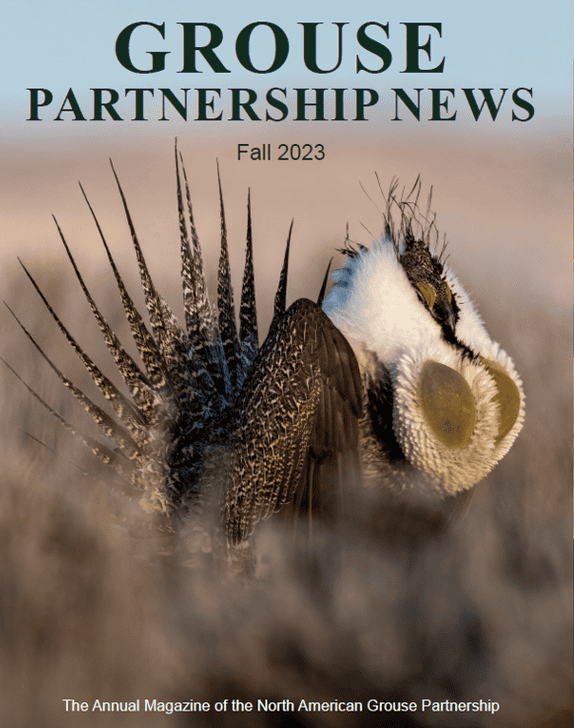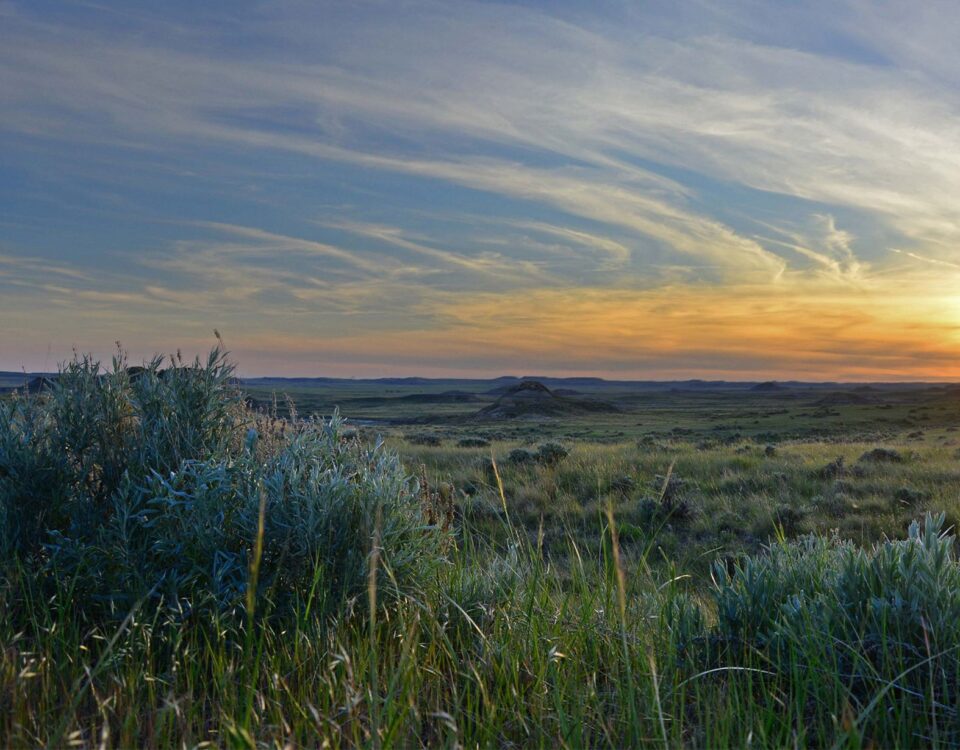
What Is Low-Tech Stream Restoration?
River expert Joe Wheaton explains how simple, cost-effective, hand-built structures are helping repair streams across the West.

Meet Leah Mori: Helping Ranchers Weather Wildfire Storms in Nevada’s Sagebrush Sea
August 20, 2018
Running The Ranch
August 30, 2018
Ask An Expert: Joe Wheaton | Associate Professor and Fluvial Geomorphologist, Utah State University, Department of Watershed Sciences
What is low-tech stream restoration?
It refers to simple, cost-effective, hand-built solutions that help repair degraded streams. Rather than using big construction equipment to force a stream into place, the goal is to kickstart ecological processes that allow the stream to repair itself.
These simple structures are less risky, less expensive, and easier to install than traditional river restoration projects. We think of low-tech restoration as “blue collar conservation” because they can be built by anyone, not just trained engineers—this gets more people involved in conservation, which is awesome!
The technical term for this approaches is process-based restoration. Practitioners like Bill Zeedyk sum it up as: “let the water do the work,” or in the case of beaver-assisted restoration, “let the rodent do the work”.
People have been building these types of low-tech structures for hundreds of years, from British Columbia in the 1930s to the Zuni people in the American Southwest. Examples include building beaver dam analogs or other stick-and-stone structures that improve hydrologic function and ecosystem health.
Why do we need simpler solutions?
After two decades in this field, I’ve realized that there’s frequently a mismatch between the scope of degradation of a stream and our efforts to fix it. Too often, we turn to big yellow machines and complex engineering plans that are very expensive. This limits our ability to scale up and fix all of the streams in need.
In the U.S., we collectively spend around $15 billion per year on fixing streams—and we’re hardly scratching the surface.
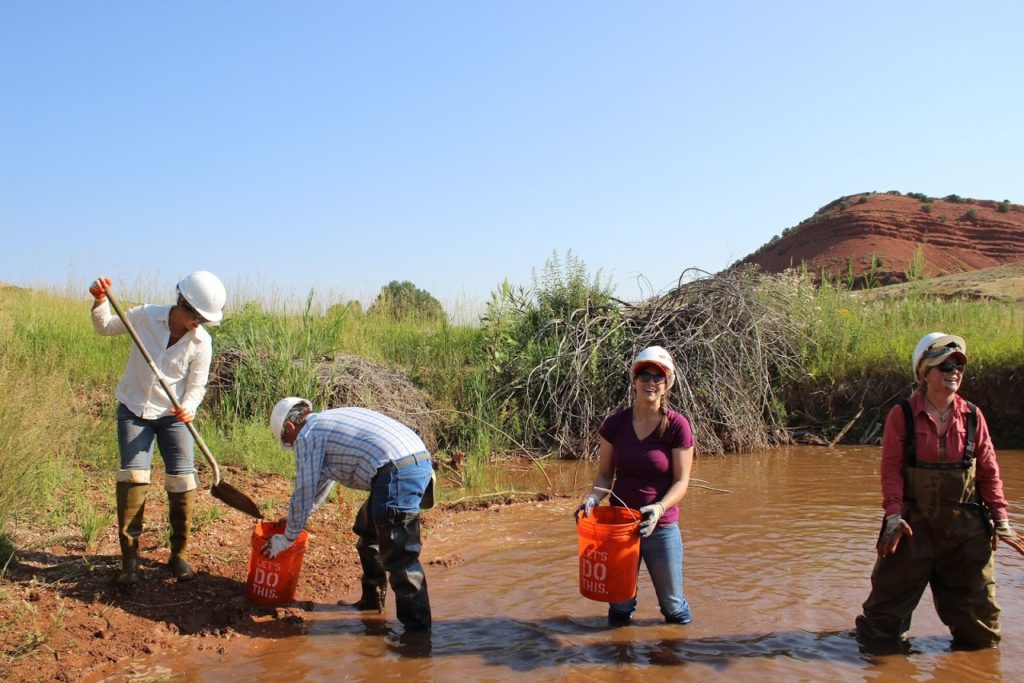
All it takes is some shovels, some buckets, and a little sweat to install low-tech restoration structures that kickstart a stream’s natural processes. Photo: John Coffman
Think of restoration in terms of health care: big construction projects are like surgery, designed to completely overhaul a small reach of river. There are times and places where this approach is appropriate—especially near population centers— and other times where the treatment doesn’t need to be so invasive—like a little creek in the middle of sagebrush country.
Low-tech restoration approaches are more like preventative medicine: helping streams find an appropriate diet and exercise regime so they can stay healthy for the long-term.
What kind of “diet” do streams need?
A mix of water, sediment, wood, and nutrients make up a stream’s diet. Just like people, however, each stream need’s a slightly different diet depending on its age and where it’s located.
Streams are fed during floods, which wash down the dirt, rocks, and wood that it needs to stay healthy. These natural elements slow down the stream’s flow, spreading water across the landscape where it can be stored longer between flood events.
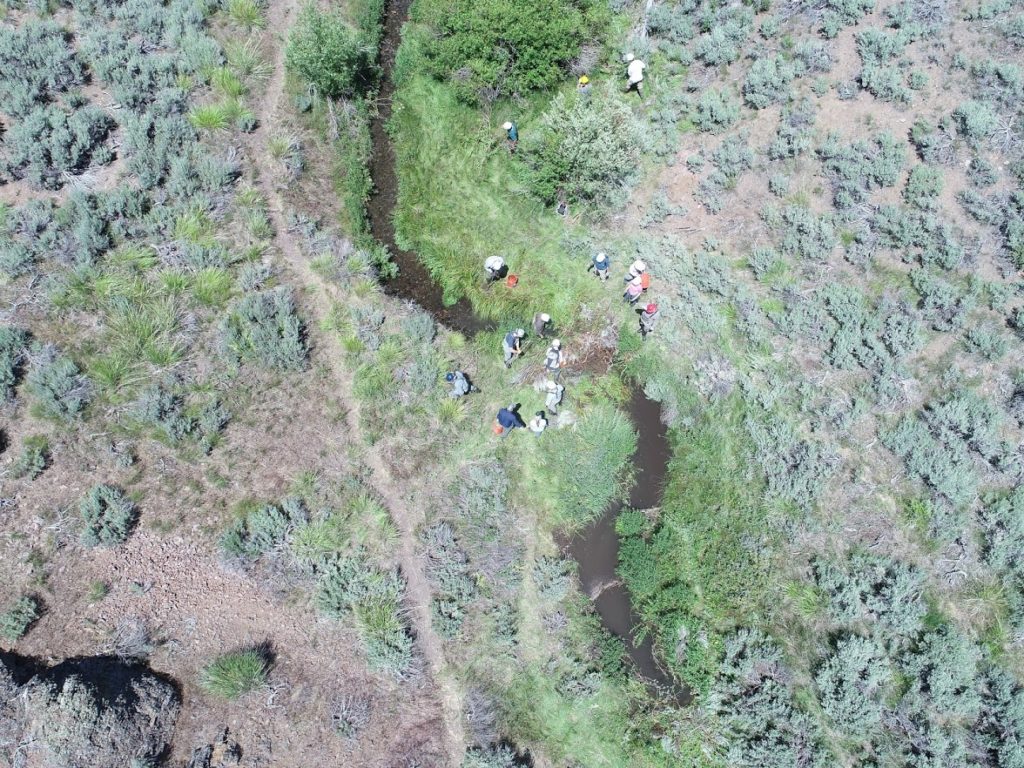
Hand-built structures made of natural components (like wood, mud and rocks found on site) help spread valuable water out across the arid sagebrush landscape. Photo: Joseph Wheaton
A healthy diet allows a stream to grow more green groceries for birds and herds. Spreading out the water reduces the erosive energy of floods, creates better wildlife habitat, and provides drought insurance in the form of more groundwater and flows that last later into the dry season.
Unfortunately, most of the streams in the western U.S. have been starved of sediment and wood for a couple of centuries. That means our waterways flow fast and deep, cutting into valuable pastures and reducing the amount of precious riparian habitat available for livestock and wildlife.
How do low-tech restoration approaches work?
By “feeding” the stream with simple structures, we help it regenerate on its own.
We give the stream the materials it needs to repair itself—strategically placed sticks and stones.
These can be low-tech structures that mimic beaver dams, or clumps of woody debris that enhance flow and habitat complexity, or simple rock dams that heal incised gullies. All of these structures can be built by hand in less than a day with shovels, loppers, buckets, and a little sweat.
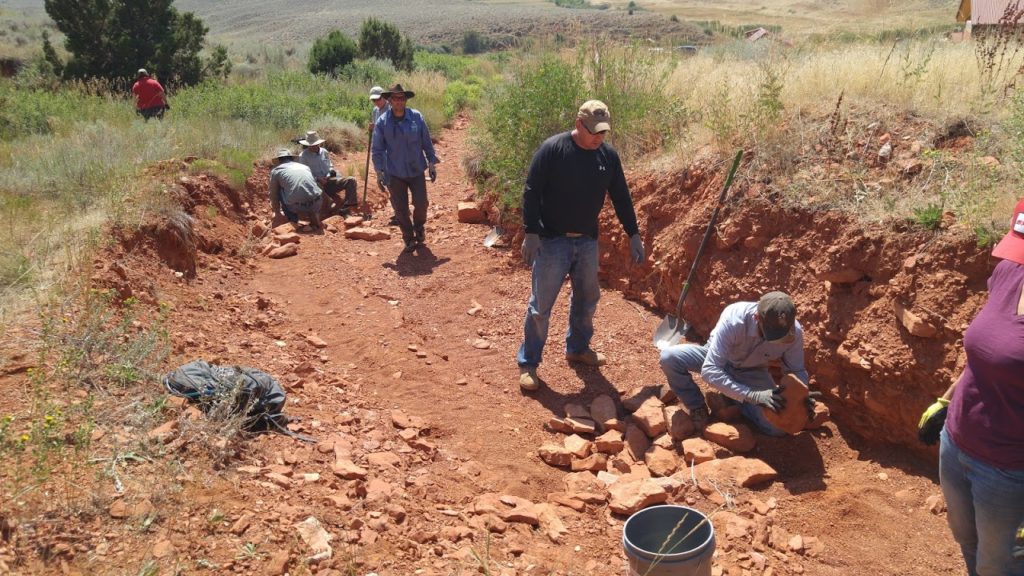
These rock structures will help reduce erosion by slowing flows when this intermittent stream near Lander, Wyoming floods in the spring. Photo: Jeremy Maestas
Just like there’s no such thing as one “miracle pill” that keeps our bodies healthy forever, stream systems also require more than one simple fix. For instance, on a mile-long stretch, we might combine different types of hand-built, in-stream structures with grazing management practices geared to rest and restore riparian pastures.
Unlike traditional restoration approaches—which are engineered to last a long time—the goal for these simple structures is that they don’t last very long. We hope the river digests the “meal” we give it, moving the structures around the floodplain in a way that improves the overall health of the ecosystem.
How much does this approach cost?
Less than one-tenth the cost of traditional restoration projects. Cost efficiency really grows when you are able to leverage volunteers and Mother Nature.
Low-tech structures stretch restoration dollars much further.

A beaver swims above a recently installed beaver dam analog structure in Idaho. Photo: Eric Winford
For instance, in one example we were able to use volunteer labor to strategically place a couple dozen beaver dam analogues in a stream for under $10,000. These structures drew in beavers, which subsequently built over 100 more dams, completely transforming the landscape and delivering more water for working lands and wildlife.
The biggest costs are the human resources needed to permit and plan the projects. That’s why I encourage people to look at a ranch-size scale when planning these restoration projects instead of a quarter-mile reach of stream.
When you’re putting in hundreds of structures as opposed to a few, you have economy of scale. For larger projects, we bring in Conservation Corps crews or volunteers to help bring the per-unit cost down even more.

Volunteers build a beaver dam analog with posts and willow branches near Hailey, Idaho. Photo: Eric Winford
Since the best practice is to use natural, locally-sourced ingredients to feed the stream, that means the materials are often on site already—and free! You could use untreated fence posts, branches from recently cut trees, or existing rocks.
Which size of streams most benefit from these techniques?
The principles of process-based restoration can be used successfully on anything from the smallest creeks to the largest rivers.
However, a safe rule of thumb is to use these hand-crafted, low-tech structures in streams you can wade across at low flow. Although these approaches can work in bigger rivers, it’s logistically more complicated—akin to catering a meal for 5,000 people instead of making dinner at home for 5 friends.

Anyone can learn to install low-tech restoration stream restoration structures, which is why it’s sometimes called “blue collar conservation.” Photo: John Coffman
Hand-built structures are especially perfect for addressing problems on working lands in arid sagebrush country, where streams are often tiny trickles or even intermittent drainages. In fact, across the U.S. 90% of the 3.5 million miles of perennial streams and rivers are classified as “first order,” or small streams.
Have you noticed increased interest in simple restoration solutions?
People are definitely excited after seeing these structures in action, partly because anyone can build them and partly because there’s instant gratification. You can turn a trickle into a pond after one day’s work!
It seems like a magic trick, but it’s really just a matter of changing up the timing of how long water sticks around.
However, although it’s conceptually simple, it can be challenging to get over people’s misconceptions and preconceived notions of what a stream should look like. It also takes proper planning. So, we’ve teamed up with NRCS to conduct workshops around the West to get people up to speed on how to use low-tech structures to kickstart process-based restoration.

Workshop participants practice making a beaver dam analog structure in Lander, Wyoming before heading into the stream. Photo: Jeremy Maestas
MEET THE EXPERT
How did you learn about restoration of riverscapes?

I’ve been working as a fluvial scientist for 20 years, and actually started out as a civil engineer. Since I’ve always loved floating rivers, I was pretty thrilled to learn I could make a career out of studying and restoring them!
In grad school, I started learning about stream restoration to create spawning habitat for fish. As my career progressed, I started to question why and when we need to use big yellow machines to fix problems. I’ve focused my research, teaching, and service on better understanding riverscapes and then translating that science into useful applications.
I’m committed to helping others better manage, conserve and restore watersheds. In 2015, Nick Bouwes, Steve Bennett and I launched Anabranch Solutions in response to queries from practitioners asking for help implementing process-based restoration. In the next de cade, we hope to help partners tackle hundreds of projects to directly improve tens of thousands of miles of streams.
What do you do for fun?
Anything my two sons, who are 11 and 13, will still do with me—these days that’s playing football or basketball. My wife and I enjoy boating, hiking, camping, traveling and gardening together.
To get my own adrenaline fix, I whitewater kayak and mountain bike as much as I can. For sanity and fitness, I swim a lot. I like any form of head-down manual labor… especially yard work! Manual labor is a nice break after doing so much talking and writing for a living.
Learn More:
Starter Guide For Healing Degraded Meadows With Hand-Built Structures In Sagebrush Country




